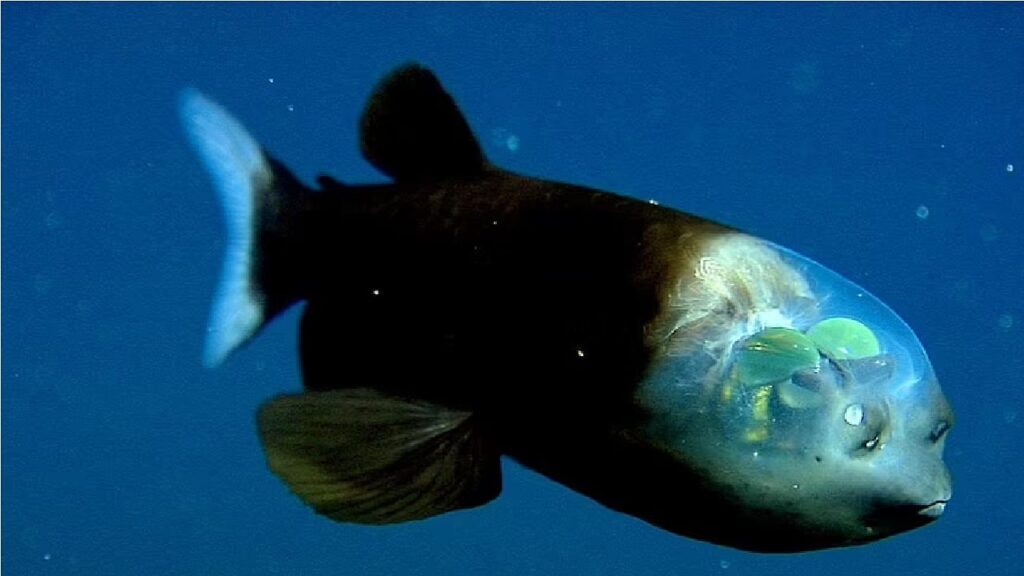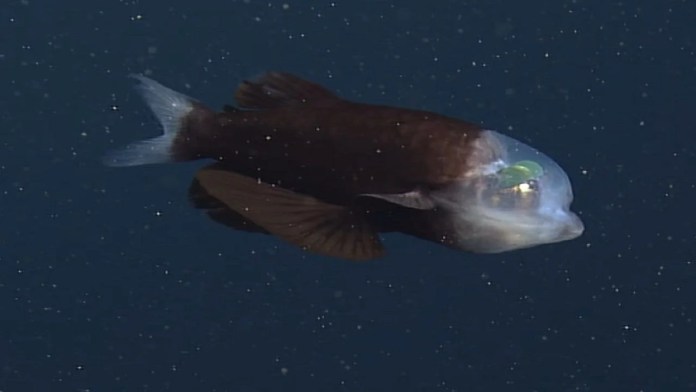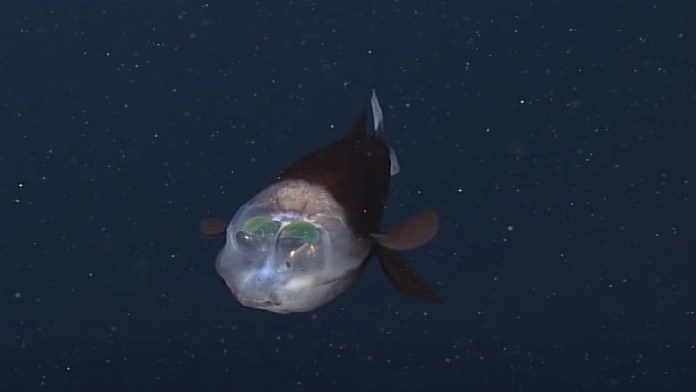Alien-like fish with a translucent head that exposes its green eyes is spotted near California
There is an alien-like fish that lives some 2,000 feet below the ocean off the coast of California that has a translucent head that exposes its glowing eyes. Called the barreley fish, the deep-sea creature was spotted by the Monterey Bay Aquarium Research Institute (MBARI) using its remote-operated vehicle (ROV).
‘MBARI’s remotely operated vehicles Ventana and Doc Ricketts have logged more than 5,600 successful dives and recorded more than 27,600 hours of video—yet we’ve only encountered this fish nine times,’ the video description reads.
The elusive fish has two small indentations where its eyes would normally be, but instead, its eyes are two glowing green orbs behind its face that gaze up towards the top of its head.

Its eyes are in that position to allow the creature to scan the waters above it for food, since it lives so deep where food is scarce, along with allowing it to rotate its eyes forward.
The barreley fish was spotted on an expedition led by Rachel Carson in Monterey Bay off the coast of California last week, but it was first described in 1939, CNET reports.
While its body is mostly dark, the top part of its head is transparent and its eyes are clearly visible. According to evolutionary biologists, the fish developed such a powerful sense of sight as a result of the harsh environment it lives in, where no sunlight can reach.
Its eyes are known as tubular eyes, which are typically among deep-sea creatures, consisting of a multi-layer retina and a big lens, which allows them to detect the maximum quantity of light in one direction.

However, the eyes were believed to be fixed in place and seemed to provide only a ‘tunnel-vision’ view of whatever was directly above the fish’s head – this was the theory until 2019.
In 2019, a new study showed that the fish’s unusual eyes can rotate within a transparent shield that covers its head, allowing it to look up for food and forward to see what it is eating.
The marine biologists also found that it uses its large, flat fins to remain motionless in the water.

This means that creatures around it cannot see it clearly. Predators lurking above it cannot spot it either, however, it can look upwards to hunt for the small fish and plankton it lives off.
When a suitable morsel is identified, the barreleye fish attacks out of the darkness and swiftly engulfs its prey.
To avoid looking at the sun when it moves into shallower waters, the creature’s eyes can rotate to look forward so it can see where it is swimming.
Its amazing eyes glow a bright green and researchers believe it may have developed a form of light filter which allows it to ignore the sunlight and spot the bioluminescence of small fish and jellyfish – its favourite food.





